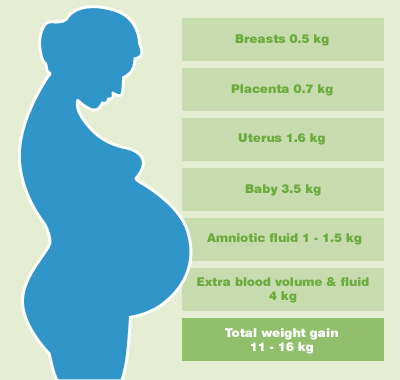As
we grow and develop through our lifespan, our nutritional needs change
too. Through periods of growth, such as
infancy and puberty, our body needs more calories and nutrients. As growth declines, our energy needs and
caloric intake decline. Our food choices
can also change depending on the stage of our life. Social, psychological, economic, physical,
and leisure roles change during our life span, thus impacting our nutritional
decisions.
Nutrition
is very pivotal throughout infancy. Much
of the body’s brain development occurs during the first 2 years of life (Purdue University, 2002). This is also a time of major growth
throughout the body. Breast milk or
fortified formula is the most important food during this time (Purdue University, 2002). Introduction to different types of foods
starts during this period. It is so
important to offer a variety of foods so infants begin to develop a taste for
all types (Purdue University,
2002). Avoidance of sugary foods is highly
recommended.
TODDLERHOOD
As
infants move into toddlerhood, nutrition needs are still high. However, during this period, children are
often active and busy. This can make
meal time a challenge. It is important
to offer foods that are packed full of nutrients in every bite (Purdue University, 2002). Toddlers often eat several small meals. During this time the development of table
manners and the importance of sitting at a table for a family meal are
introduced and reinforced (Purdue
University, 2002). Toddlers enjoy a sense of
independence. Allowing finger foods and
toddler sized utensils helps foster this independence.
ADOLESCENCE
 Adolescence
is another period of great growth causing a need for increased caloric intake (Purdue University, 2002). However, this is also a time period where
body image and peer acceptance play a huge role (Purdue University, 2002). It is important, during this stage, to
continue to eat family meals at a table together. This allows parents to model healthy
nutrition. Allowing teens to help plan
and make meals lets them take ownership of their diet. Also, giving teens choices encourages them to
continue to eat healthy but have some independence as well.
Adolescence
is another period of great growth causing a need for increased caloric intake (Purdue University, 2002). However, this is also a time period where
body image and peer acceptance play a huge role (Purdue University, 2002). It is important, during this stage, to
continue to eat family meals at a table together. This allows parents to model healthy
nutrition. Allowing teens to help plan
and make meals lets them take ownership of their diet. Also, giving teens choices encourages them to
continue to eat healthy but have some independence as well.
ADULTHOOD
During
adulthood, our caloric needs decrease (Purdue University, 2002). It is
important to continue to eat a variety of foods, limiting sweets and alcohol
intake. Stress and time factors from
family and work life can dictate our eating habits in adulthood. Exercise is a must to maintain a healthy
lifestyle. However, it is often tricky
trying to balance family, work, and social life plus fitting in exercise. Many people begin to face health problems
associated with poor nutrition and lack of exercise in adulthood (Purdue University, 2002). These scares can force people into a more
nutritious diet.
As
adults pass into “old age”, their caloric needs greatly decrease (Purdue University, 2002). Vitamins and minerals are still essential but
energy needs go down (Purdue
University, 2002). Now is the time that
eating nutrient dense foods become very important. Many elderly people do not absorb nutrients
as efficiently (Purdue
University, 2002). It is not sure why. Older adults often have difficulty eating
meat and chewing hard or chewy foods. As
age progresses, swallowing difficulties may develop. Another problem facing the elderly is chronic
dehydration. Kidney function diminishes
with age often leading to a decreased amount of body fluids (Purdue University, 2002). Fluids should not be allowed to replace meals
but should be offered at meals and encouraged between meals.
PREGNANCY
 Pregnancy
poses an entirely different set of nutritional needs. Mom’s caloric needs increase (Purdue University, 2002). She also has a need for more vitamins and
minerals while pregnant and/or breastfeeding g(Purdue University, 2002). It is increasingly important that expectant
moms choose foods that pack a lot of nutrition into one serving. Gradual weight gain is important. The optimal total weight gain is 25-30 pounds
(Purdue University, 2002). Pregnant women should increase fluids, specifically
water. They need to limit caffeinated
beverages, soft drinks and sugary drinks, and beverages containing aspartame. A pregnant woman’s lifestyle and poor nutrition
habits can lead to a low birth weight baby (less than 5 1/2 pounds) (Purdue
University, 2002). Low birth
weight babies are more likely to have medical complications.
Pregnancy
poses an entirely different set of nutritional needs. Mom’s caloric needs increase (Purdue University, 2002). She also has a need for more vitamins and
minerals while pregnant and/or breastfeeding g(Purdue University, 2002). It is increasingly important that expectant
moms choose foods that pack a lot of nutrition into one serving. Gradual weight gain is important. The optimal total weight gain is 25-30 pounds
(Purdue University, 2002). Pregnant women should increase fluids, specifically
water. They need to limit caffeinated
beverages, soft drinks and sugary drinks, and beverages containing aspartame. A pregnant woman’s lifestyle and poor nutrition
habits can lead to a low birth weight baby (less than 5 1/2 pounds) (Purdue
University, 2002). Low birth
weight babies are more likely to have medical complications.
Purdue University.
(2002). Nutrition through the lifecycle. Retrieved from http://www.four-h.purdue.edu/





 www.myplate.gov
www.myplate.gov